Invertebrates of Antelope Island
(This page is still under construction. Please check back for updated information)
Insects
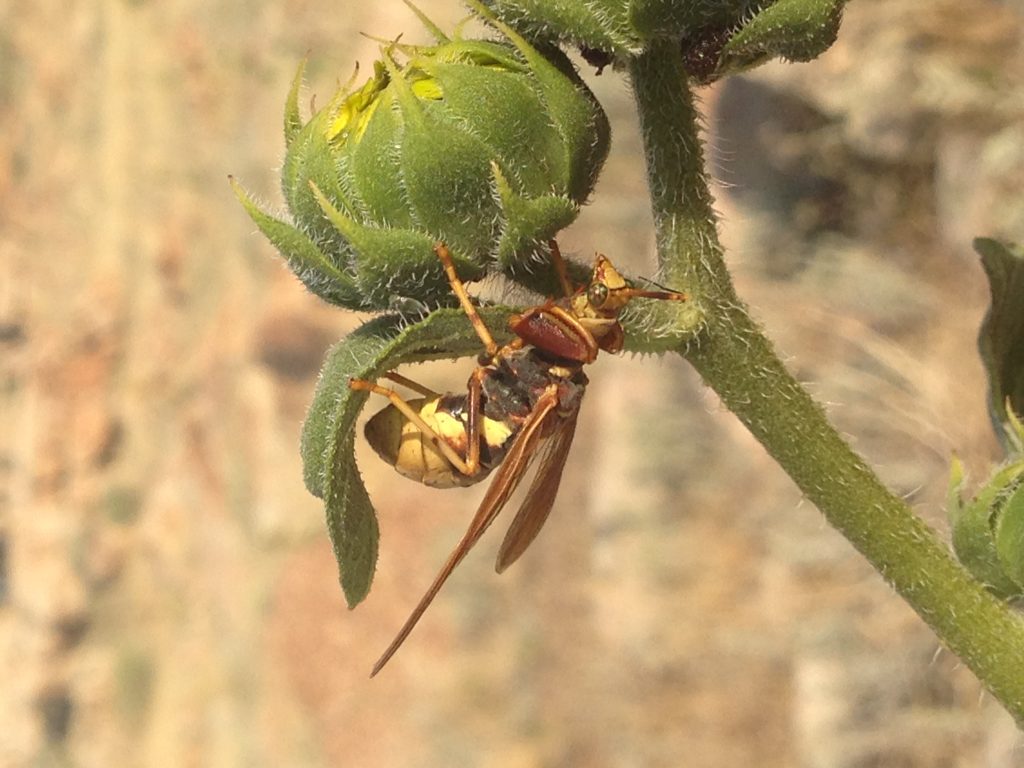
Mantispid
Did a wasp and a praying mantis have a baby?? Nope! This amazing predator isn’t really related to either of those insects, though it certainly looks like both. Mantispids aren’t commonly seen, partly because they are nocturnal. Their relatives are the lacewings. But they do like to wear their waspy stripes to confuse us. They also have grabbing front legs, like a praying mantis, to snatch up small insects for their own meals. Unlike a mantis, our friend the mantispid can’t walk on its front legs but does fine with just the back four for walking.
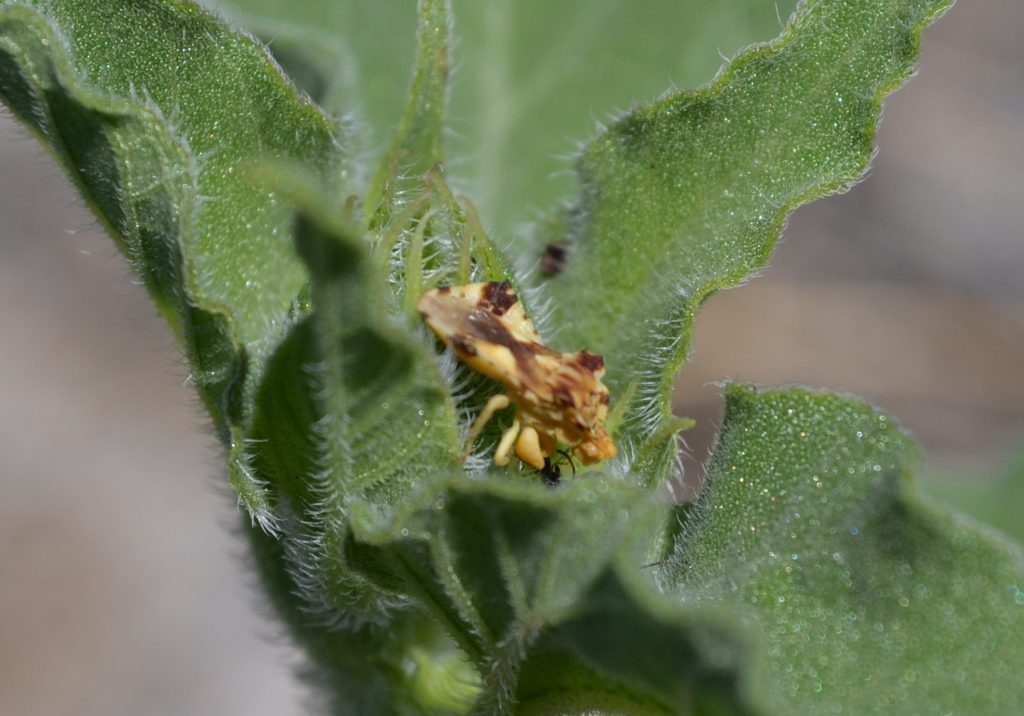
Ambush Bug (phymatidae)
Often brightly colored and covered in spikes, these “true bugs” are good at hiding amongst flowers but really they are lying in wait for potential prey. As true bugs, they don’t really have mouths – just a beak that they poke into other critters to suck their juices out! They don’t harm people so no need to fear, but if you were a smaller thing, watch out! They can take prey up to 10x their own size!
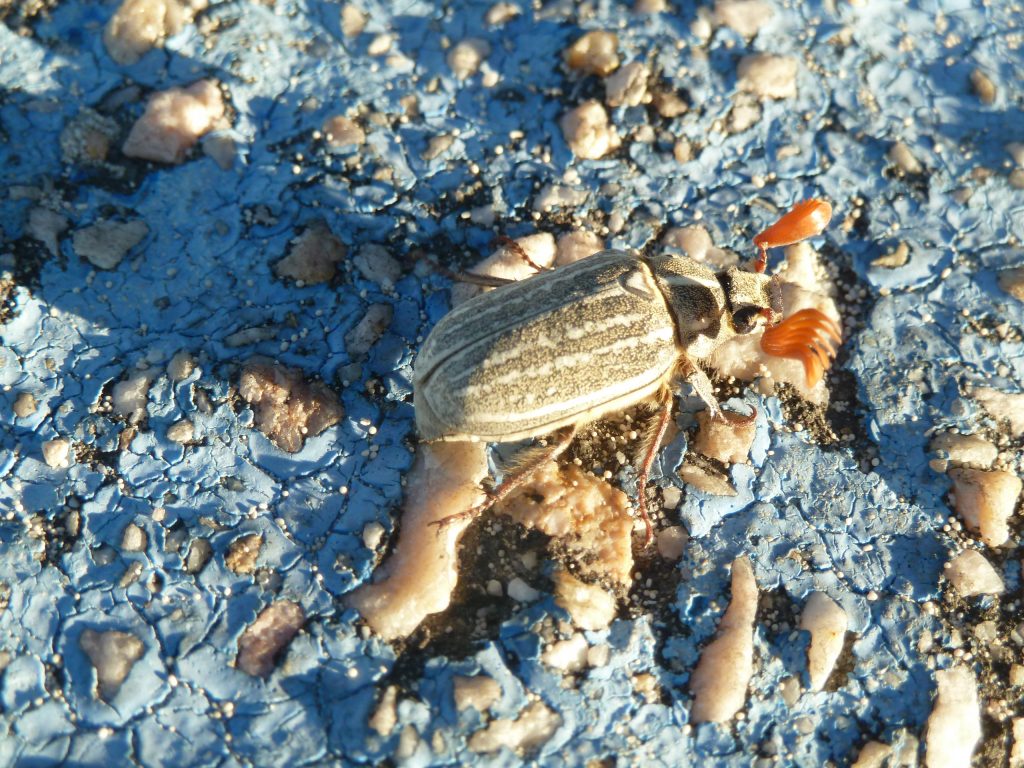
Ten Lined June Beetle (Polyphylla decemlineata)
One of the largest scarabs in the intermountain west, these little fatties look like tiny watermelons. If you look closely, you’ll notice a great, almost moose-like pair of antennae. Males have a more elaborate “rack”. You can also see fine, amber-colored hairs on its underside. Quite lovely! The larval part of this beetle’s life cycle is longer and the adult days are short, perhaps a few weeks at most. And with its inability to bite or fly very well, this beetle relies on a grumpy hiss to try to deter predators. Don’t let it scare you! It’s just air being expelled from its abdomen.
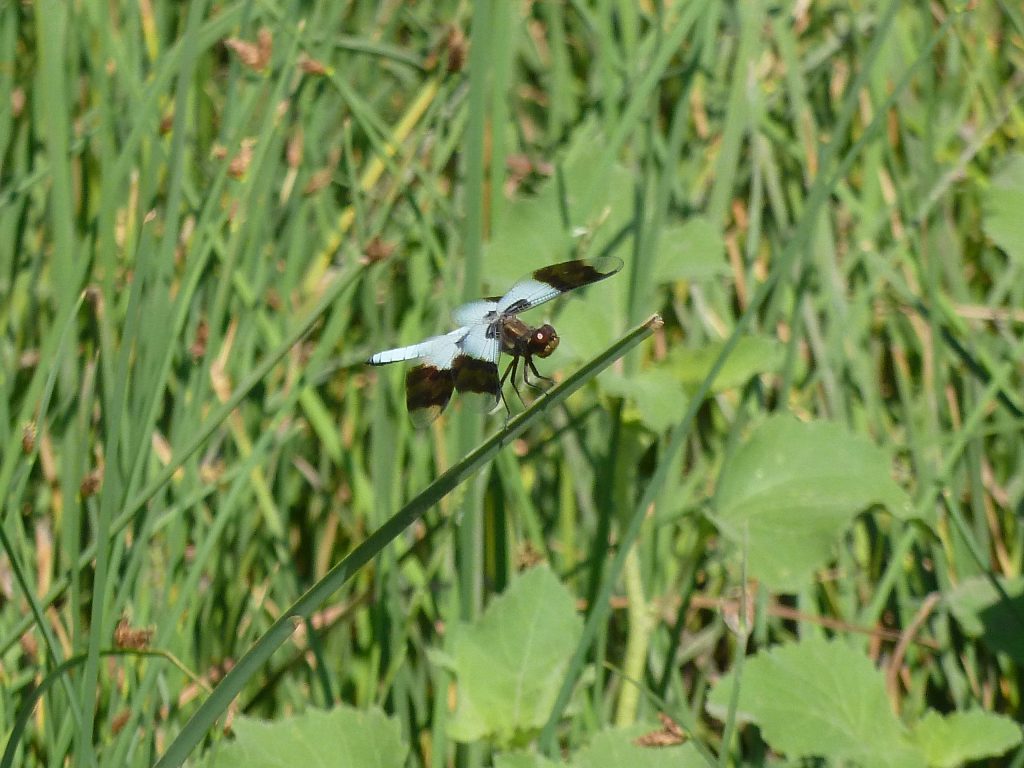
Skimmer Dragonfly
The skimmers are robust-bodied dragonfly that includes some with bold patterns, like the ten spotted skimmer and the neon skimmer. Like most adult dragonflies, their aerial performance can also be striking with males fiercely guarding territory and females diving toward the surface of the water to lay eggs. Juvenile dragonflies are called naiads, like the mythological water nymph, and are much longer-lived than adults. If one floats by, remember to thank it for eating so many of the biting flying insects that bother us!
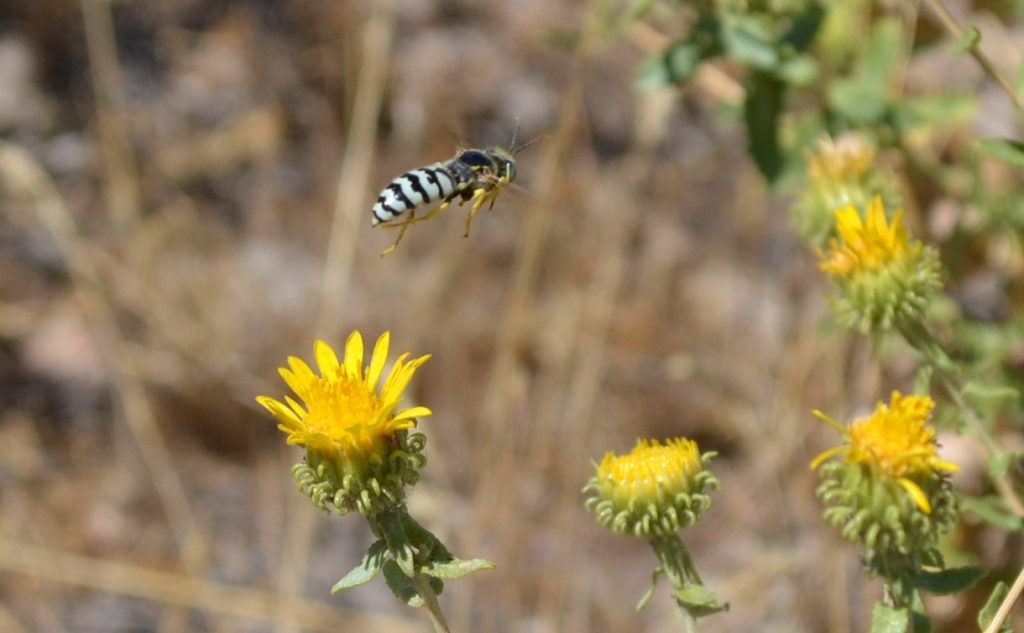
Sand Wasp (Bemix sp.)
Who’s that green-eyed beauty? It’s a sand wasp! What, you didn’t know about sand wasps? There are so many kinds of wasps, researchers think there might be more species than beetles – and there are more beetles than reptiles, birds, fish, and mammals put together!
This particular wasp catches flies and lovingly feeds them to her babies, who live in sandy holes in the desert. One baby wasp, a larvae, may eat as many as twenty flies! Do they sting? Possibly, if you caught one in your hand, but unlike yellow jackets, they are not very interested in hanging out where people are.
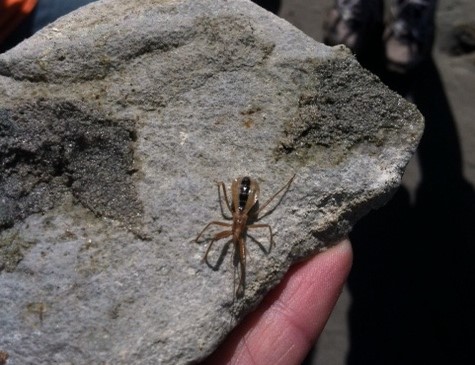
Assassin Bug (Fitchia aptera)
There are many types of assassin bugs. This particular one has the distinction of not often bothering to grow out its wings. Notice the species name “Aptera” which means without wings. It is one of the predatory “true bugs” that uses a beak to catch and consume prey. A true bug doesn’t have complete metamorphosis but just starts out as a little bug and molts, or grows, into a larger one until it reaches adulthood.
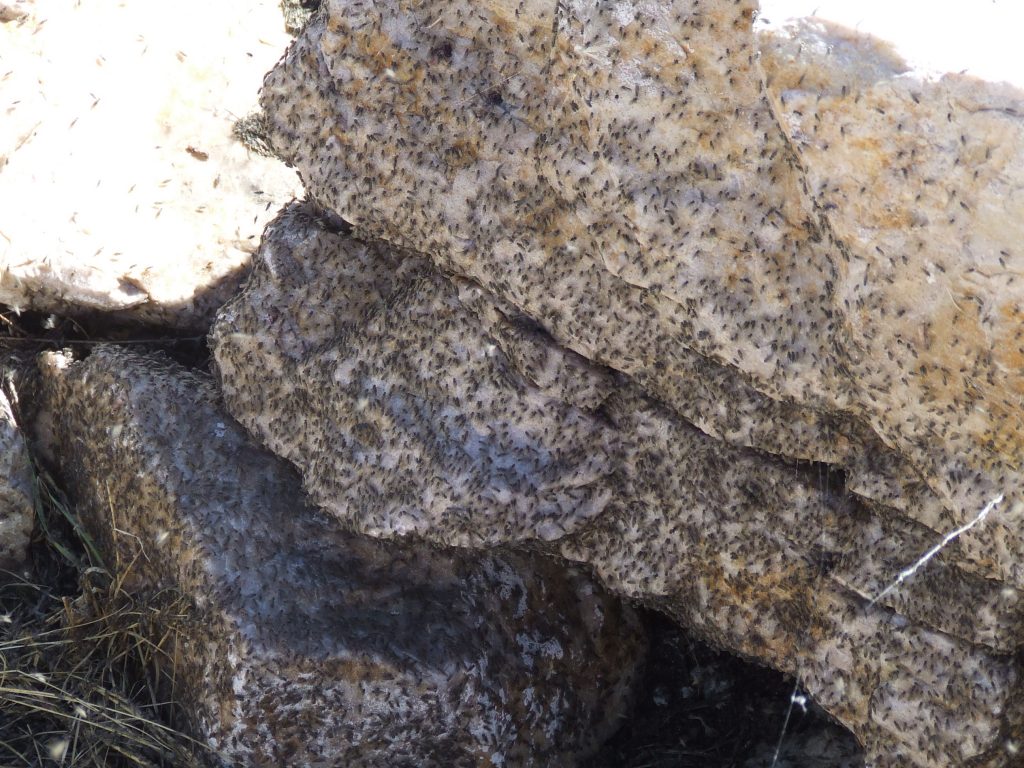
Brine Flies (Ephydra sp.)
Certainly Great Salt Lake’s most noticeable invertebrate, brine flies are astounding in their heartiness and vital in their place in the food chain. As birds stopover on their migratory route, these flies represent a precious food resource that sustains them on the long journey. But how do they survive in such numbers in such a salty habitat? A special organ allows them to remove salt from their bodies. Larvae actually live in the lake, overwintering at the bottom of the water. Adults emerge and live just a few days. And here’s a GSL secret: lake lovers know that brine flies are only at the edge of the lake. Once you’ve stepped in a few yards, there aren’t any flies and the water is yours to enjoy!
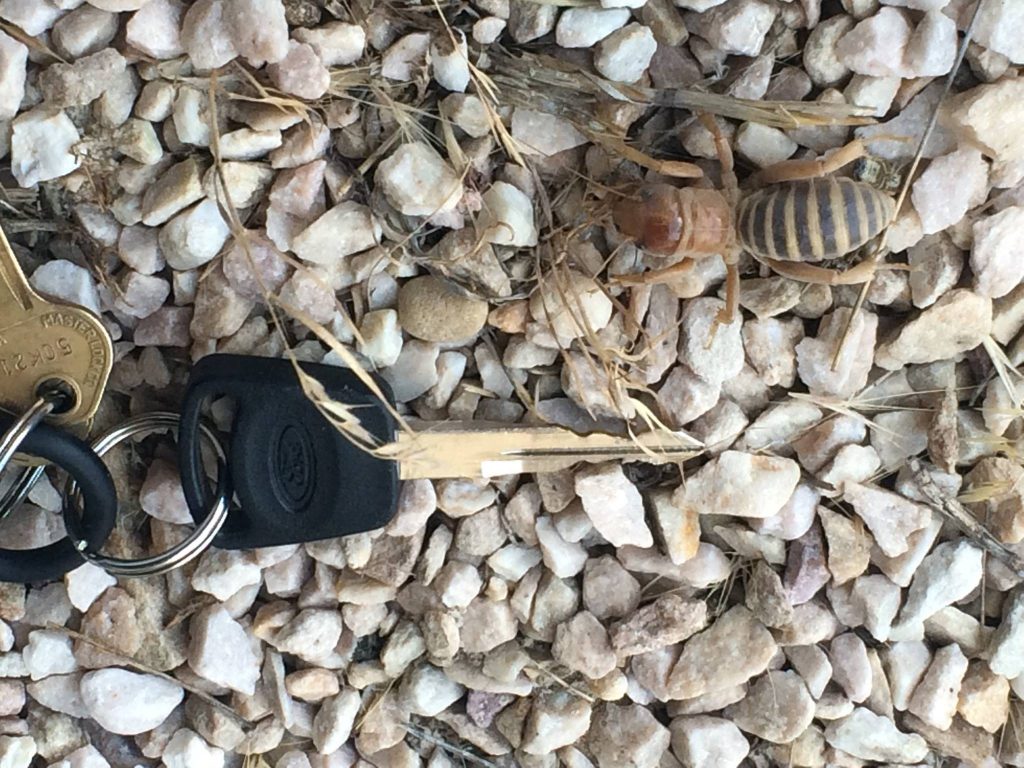
Jerusalem Cricket (Stenopelmatus sp.)
One of the most memorable invertebrates you’ll ever see! Jerusalem crickets are one of the few wingless insects. Their very spiny legs are great for digging and that’s where they’d rather be – underground. Because of this, and their nocturnal and solitary habits, they are not often seen. Their common name, “Jerusalem” is believed to come from the 19th-century habit of using the word as an expletive, a not uncommon thing to use when encountering these fascinating creatures.
Spiders
Orb Weavers (Family Araneidae)
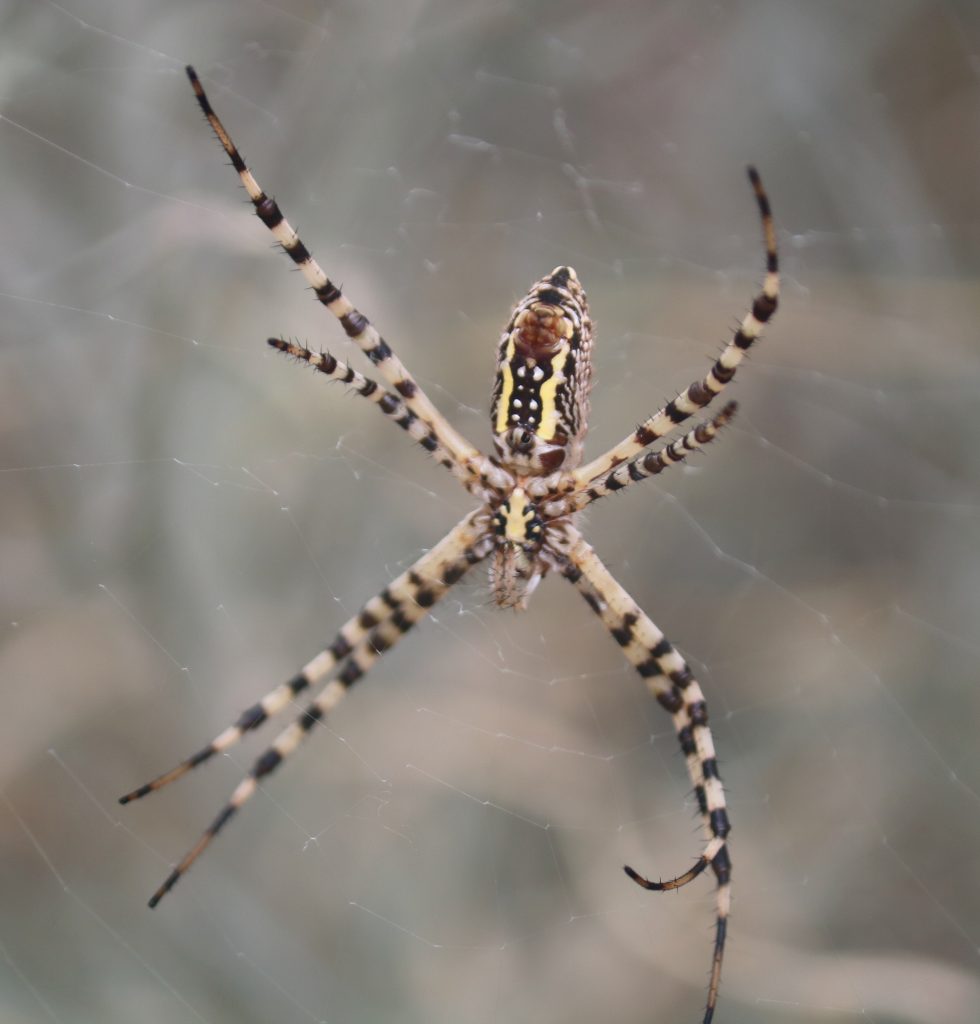
Banded Argiope (Argiope trifasciata)
Photo courtesy: Margie Nash
Commonly called banded garden spiders, these large orb weavers build beautiful, concentrically patterned webs in and near grass, shrubs and other tall vegetation. While they do have venom, their venom is not of medical concern to humans. These beauties are quite shy and prefer to hang quietly in their web. Females are much larger than males, who stay off to the side, out of sight. The female will generally be found in the middle of the web, head down, with her belly facing south.
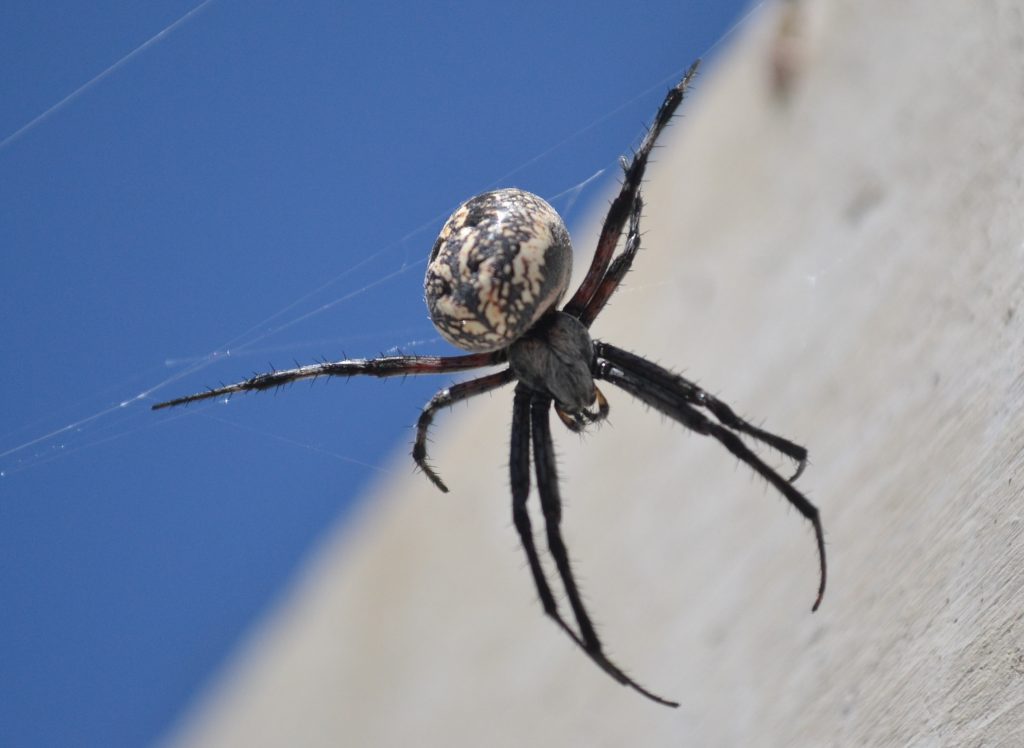
Western Spotted Orb Weaver (Neoscona oaxacensis)
Easily the most commonly encountered spider on Antelope Island. These abundant orb weavers build their large, beautiful round webs wherever they can span two objects: between sagebrush, across trails, in building and vehicle windows, on and near buildings, etc. These shy, harmless spiders are known to quickly drop from their webs or hustle out of sight when approached. Males are slightly smaller in size and tend to hang off to the side, while the female dominates the middle of the web. The abundance of available food, mainly brine flies, allows these spiders to grown in great abundance, and many can be spotted occupying the same space.
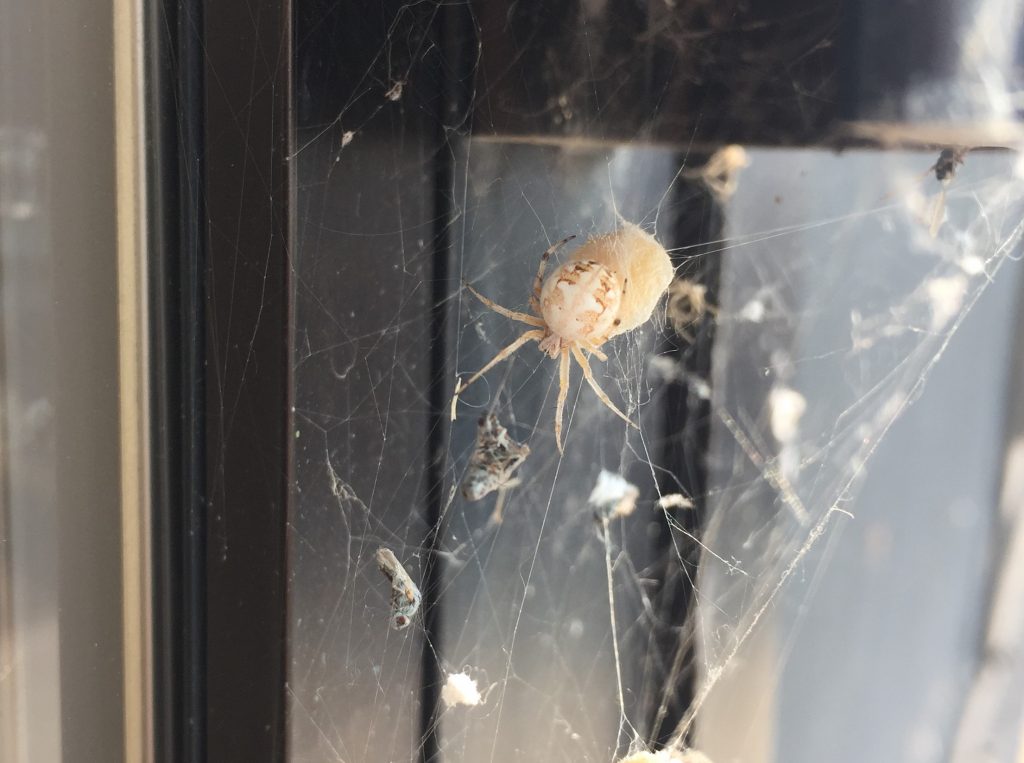
Desert Orb Weaver (Metepeira)
As the weather warms, these tiny orb weavers can be found in abundance at Antelope Island, but they are so small most people don’t notice them. We find them in tall grasses, rabbitbrush, under door handles, and other small crevices. The pattern on their abdomen is similar to that of the Western Spotted Orb Weaver, but their diminutive size and distinct nest/web building are quite different from their much larger cousins.
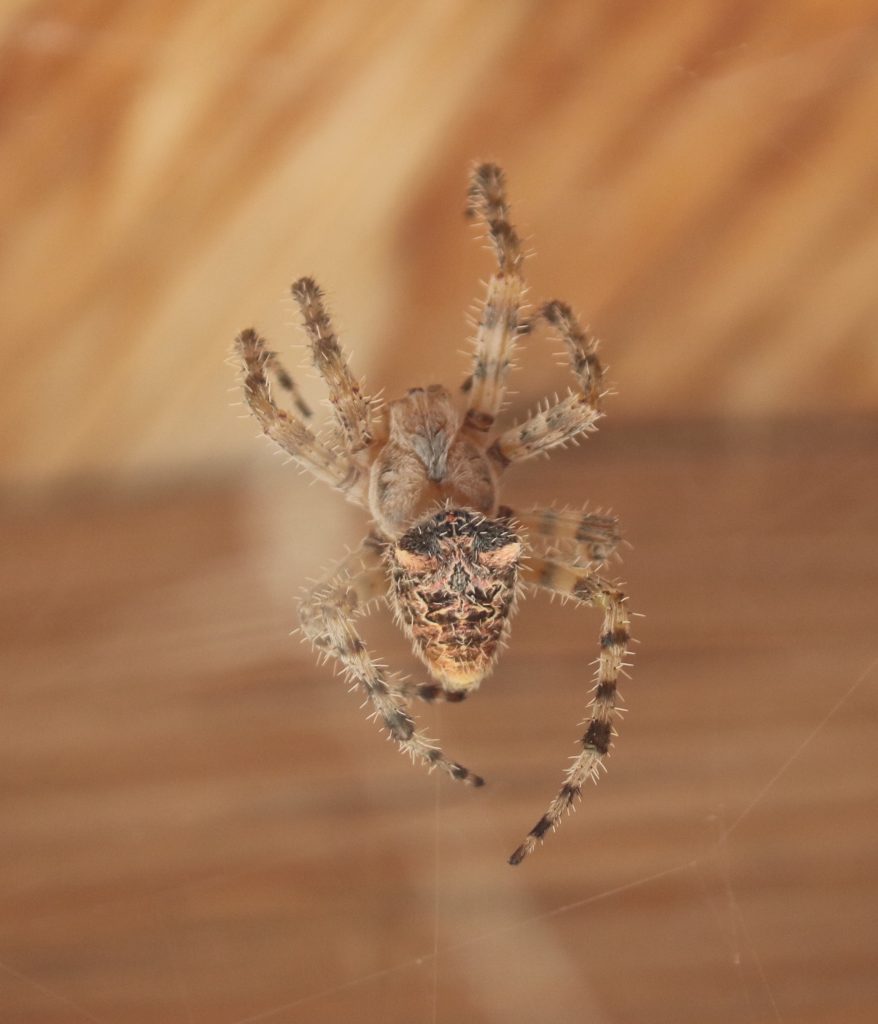
Cat-faced Spider (Araneus gemmoides)
Photo courtesy: Margie Nash
The common name for this harmless orb weaver comes from the two pronounced bumps at the top of its abdomen. When viewed from just the right angle, it has the appearance of a cat’s head, with the bumps being the ears. These unique spiders build concentric round webs and usually wait off to the side rather than in the center of the web as many other orb weavers do. Both male and female spiders have the bulbs on their abdomen, however, male cat-faced spiders are only about half the size of the female.
Jumping Spiders (Family Salticidae)
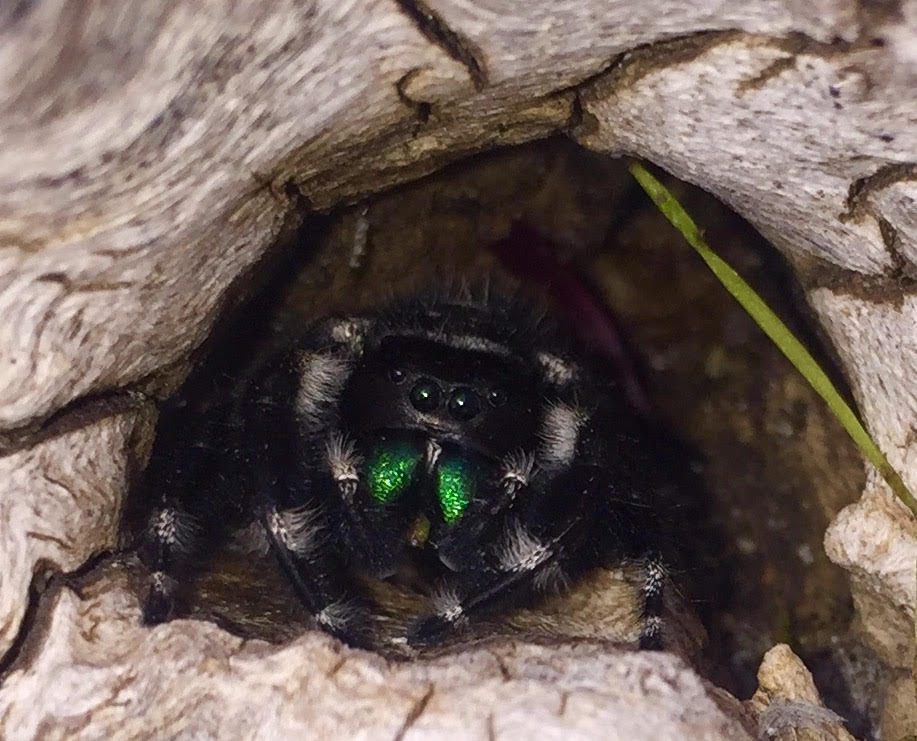
Bold Jumping Spider(Phidippus audax)
Crab Spiders (Family Thomisidae)
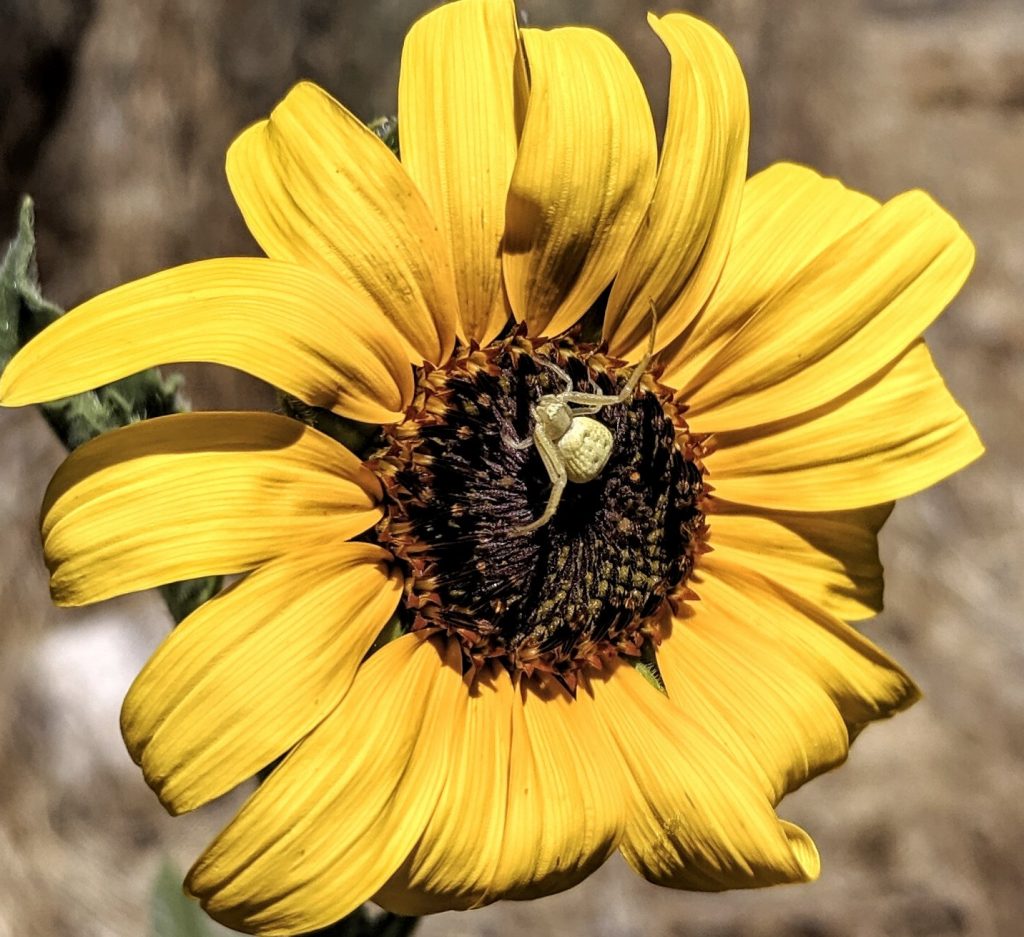
Crab Spider (Misumena or Misumenoides)
Tibellus
Cobweb Spiders (Family Theridiidae)
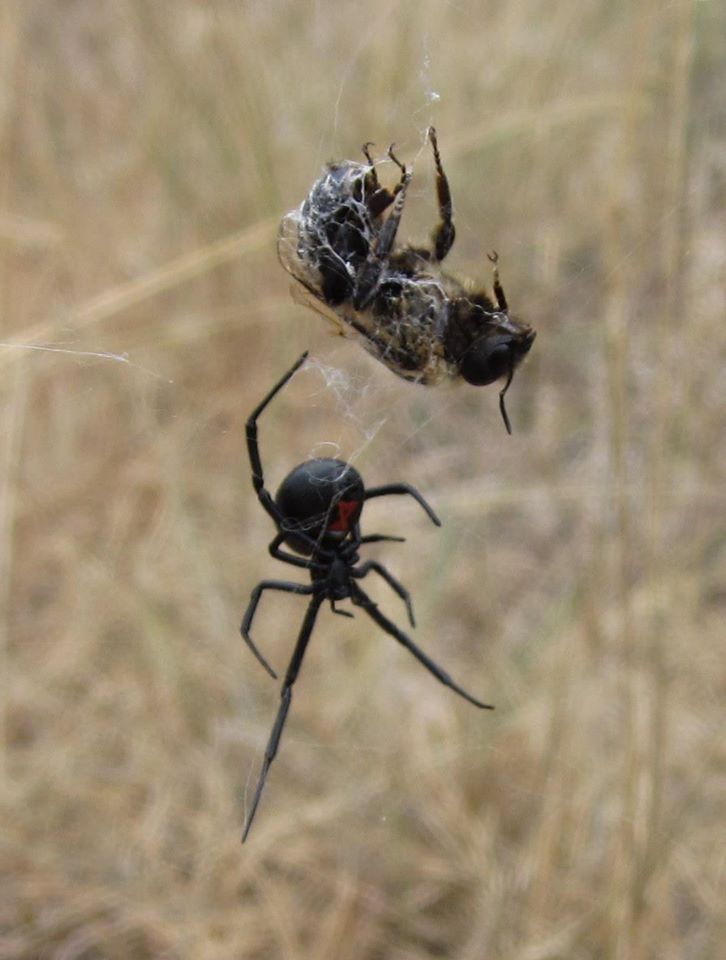
Western Black Widow (Latrodectus hesperus)
Robertus
Funnel Weaver/Grass Spiders (Family Agelenidae)
Ground Spider (Family Gnaphosidae)
Drassodes neglectus
Wolf Spiders (Family Lycosidae)
Other Arachnids
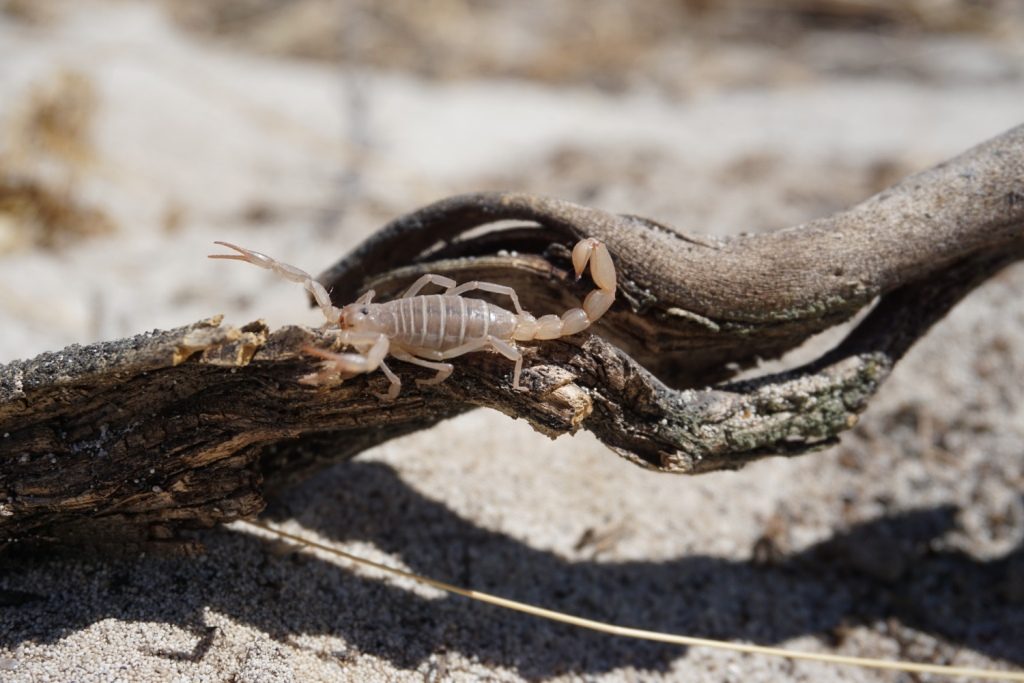
Northern Scorpion (Paruroctonus boreus)
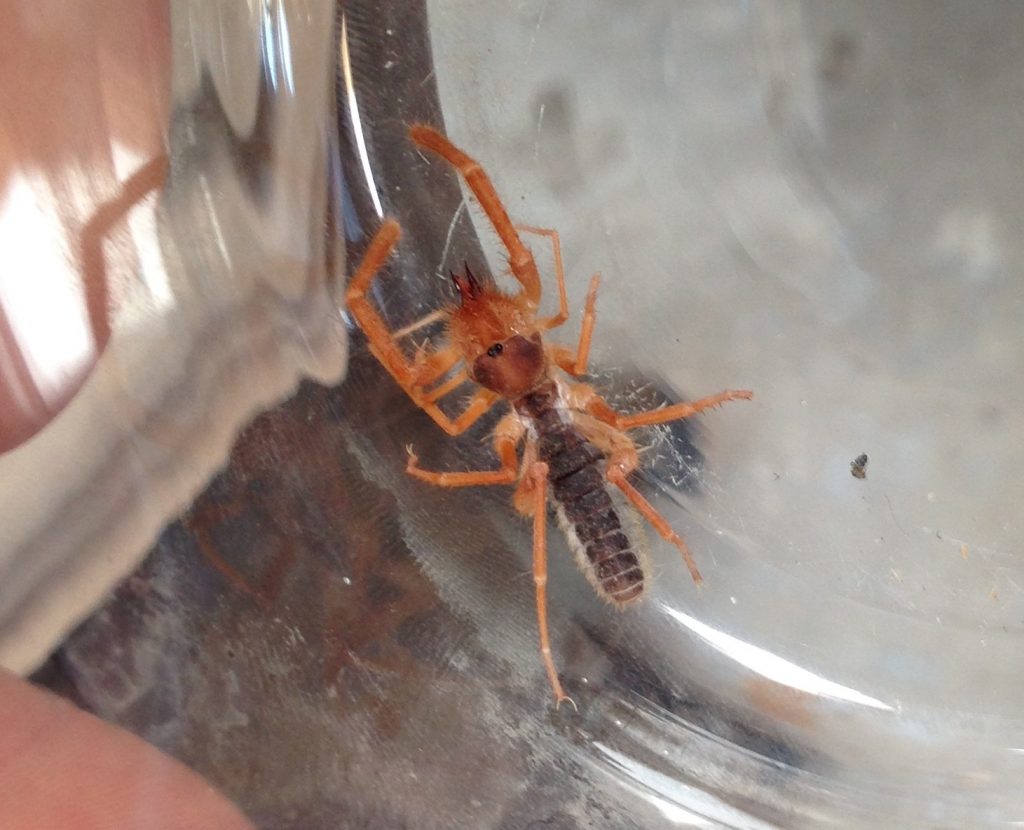
Camel Spider/Sun Scorpion (Solifugae)
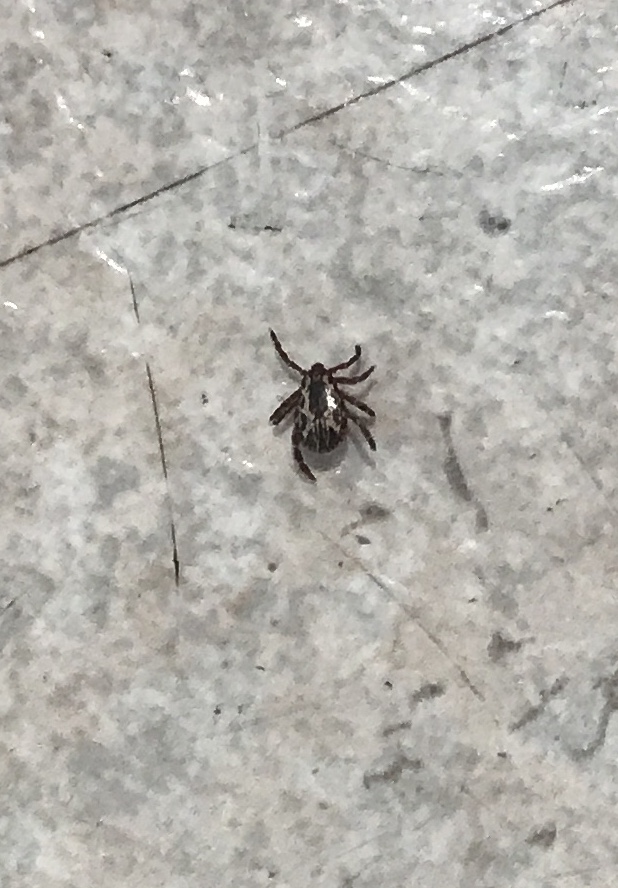
American Dog Tick (Wood Tick) (Dermacentor variabilis)